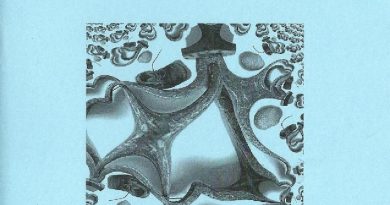The Humdrum Club by Peter Rawlings
– Reviewed by Rachel Stirling –
The Humdrum Club circles the sanctity of the self and the ambivalence of belonging. Tension is provided by the poet’s desire to belong, a deep compulsion pressing from the inside, versus his competing distaste for belonging and fear of loneliness, which seems to lie heavily on his thoughts. Yet this isn’t a dark collection. He takes pains to lift us out of melancholy, commenting on the comic book, the unreliable narrator, and the rampant anthropomorphism of the home or house as a cipher for self.
He asks what raises a person up out of the ‘humdrum’ and concludes that only love does this. But love is difficult to hold, almost impossible to keep unless captured like a photograph, a moment cherished. The remainder of these poems document a search for physical and emotional love, walking a tense line between desire and disgust. The poet drops subtle hints of a Benedictine upbringing, colliding reverence and physicality, the holy and carnal, constantly questioning.
Formally, the poems move through unrhymed tercets, numbered stanzas and lists, litany, quatrain, ode; the mode called forth by the meaning and not the other way around. Language is dated in places, revealing the memories of an older generation: pinny, sardines, clotheshorse, wireless, pen loaded with ink from a bottle in a drawer, creating a sense of remembered belonging, childhood, and in a very British fashion, endless cups of tea.
The poet fixing himself so firmly in objects, attempting to gain physical hold of the insubstantial, reveals a charming, almost childlike insecurity. The temptation is to put out a hand to steady him; I don’t think you’d lose the hand. But this is an adult exploring universal, sometimes very adult themes, questions that arise in most of our lives to a lesser extent. Part of what makes him engaging is that despite his reticence about his own nature, and the nature of his physicality, he strives to engage. He also questions whether his interest in others is natural or intrusive. Certainly his interest is intense, but intensity drives poetry in all its forms. Poetry is intensity.
This collection is grounded in the object as metaphor for subject, and on the whole it does a good job. Tension is maintained throughout, leading from the mundane into the personal with ease. The editors’ adept placement of the work makes me beautifully willing to follow. There are some delightful touches: the drumbeat ending to ‘Oskar & Daisy’, the wonderful description of terraced slates
…kinked just out
Of true like a fractured thighbone,
Or exploring isolation, the trope of a storm internal and external, which still manages to be moving.
The mind is dark too.
I hear it outside myself calling for grace.
Some moments leave a sense of discomfort, in stanzas which intentionally prod the invasive and disturbing. This is a tightrope-walk of a collection which will leave you feeling slightly uneasy, but grounded at your core. I hope the same can be said for the poet.





